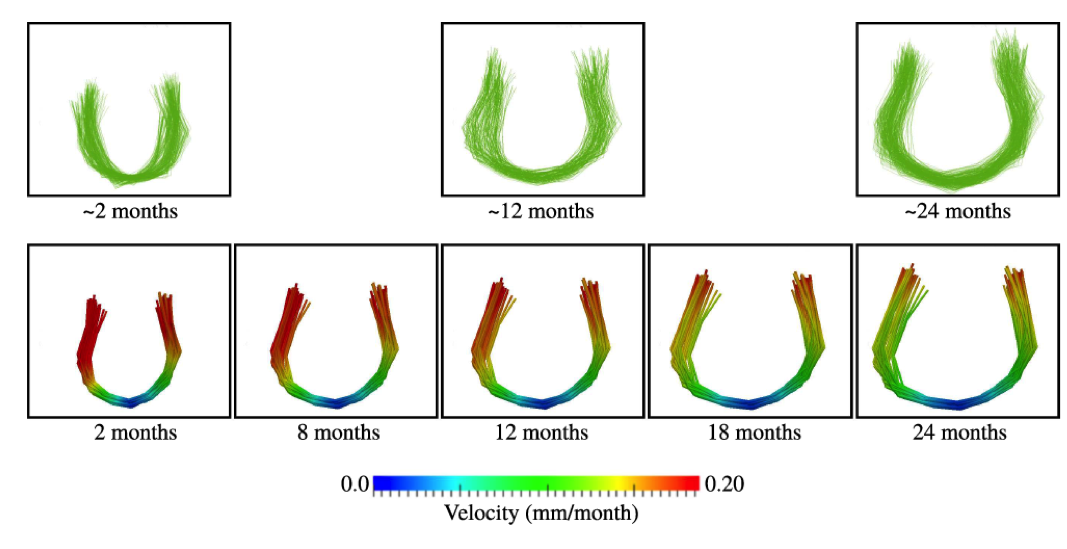Section: New Results
Geodesic regression of shape and image data
Participants : James Fishbaugh [Correspondant] , Marcel Prastawa, Guido Gerig, Stanley Durrleman.
Shape regression is emerging as an important tool for the statistical analysis of time dependent shapes. We develop a new generative model which describes shape change over time, by extending simple linear regression to the space of shapes represented as currents in the large deformation diffeomorphic metric mapping (LDDMM) framework. By analogy with linear regression, we estimate a baseline shape (intercept) and initial momenta (slope) which fully parameterize the geodesic shape evolution. This is in contrast to previous shape regression methods which assume the baseline shape is fixed. We further leverage a control point formulation, which provides a discrete and low dimensional parameterization of large diffeomorphic transformations. This flexible system decouples the parameterization of deformations from the specific shape representation, allowing the user to define the dimensionality of the deformation parameters. We present an optimization scheme that estimates the baseline shape, location of the control points, and initial momenta simultaneously via a single gradient descent algorithm.
Shapes can be given as 3D meshes (as in [32] ) or as 3D images (as in [31] ).
|



